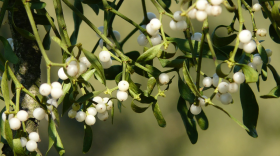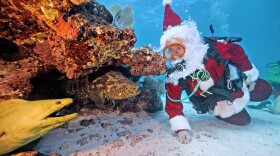Water experts in Florida agree, as well as take exception, to a new report that says Lake Okeechobee is the dirtiest lake in the United States.
The report by Lake.com, a Canadian-based vacation rental platform offering lake houses, cabins and cottages for rent, says Lake O's top issue is visibly murky water indicated by turbidity levels and lead contamination.
The report said that an amount of lead was detected in its most recent samples. There is no safe level of lead, and its presence in lakes is unnatural. Additionally, the report said turbidity here was the second-highest of all evaluated lakes after Utah Lake, giving the impression of rather cloudy water.
One cause for the murky appearance of Lake Okeechobee may be high levels of phosphorus, which stimulates algae growth.
Jason Pim, the advocacy chair for Calusa Waterkeeper, says the news shouldn’t be a surprise.
“Lake Okeechobee has been degraded by almost 100 years of our agricultural pollution. What people need to realize is the state of Florida is responsible for protecting and restoring water quality, but is failing to do so.”
Pim said Lake O has been impaired for many years by nutrients like phosphorus and nitrogen, plus heavy metals such as iron and also its turbidity.
"The sad reality is, if we could stop all inputs to Lake Okeechobee today, which we can't, there is still enough legacy pollution already in the lake and its sediment to fuel algae blooms for 50 years or more," Pim said. "This is negative impacts on our ecosystems, wildlife, human health and our economy. The state of Florida must do more to restore Lake O and hundreds of other impaired water bodies across the state. Across the board, whether it's agriculture, wastewater or development, our state is failing to hold these stakeholders accountable for their pollution loading everywhere, all across the state. Lake O is just one of the leading examples."
Gil Smart, executive director of VoteWater.org, agrees with Pim in part but says there are some questions about the study’s methodology.
"The study evaluated eight of the most commonly measured characteristics that suggest a lake's cleanliness level, like dissolved oxygen, phosphorus, lead and turbidity, among others, and found only 46 of the country's 100 biggest lakes had at least three of those pollution factors measured between January 1, 2020 and July 15, 2025, so it's possible some of those lakes that might not have been sampled during that time are actually dirtier," Smart said.
Smart did concede the study confirms that Lake O is polluted, which has been known for a long time, and the problem is it's not getting better.
"Pollutants continue to flow into the lake from the north. What really needs to happen is the lake needs to be dredged, but just imagine the size of that project and the price tag," he said.
Smart said there's no simple answer other than more needs to be done, and it's going to take a lot of political will to do it.
One other Florida impoundment, Lake George, which is in Volusia and Putnam counties, also made the top 10 dirtiest U.S. lakes.
According to the study, the cleanest U.S. lake was Lake Superior.
WGCU is your trusted source for news and information in Southwest Florida. We are a nonprofit public service, and your support is more critical than ever. Keep public media strong and donate now. Thank you.








